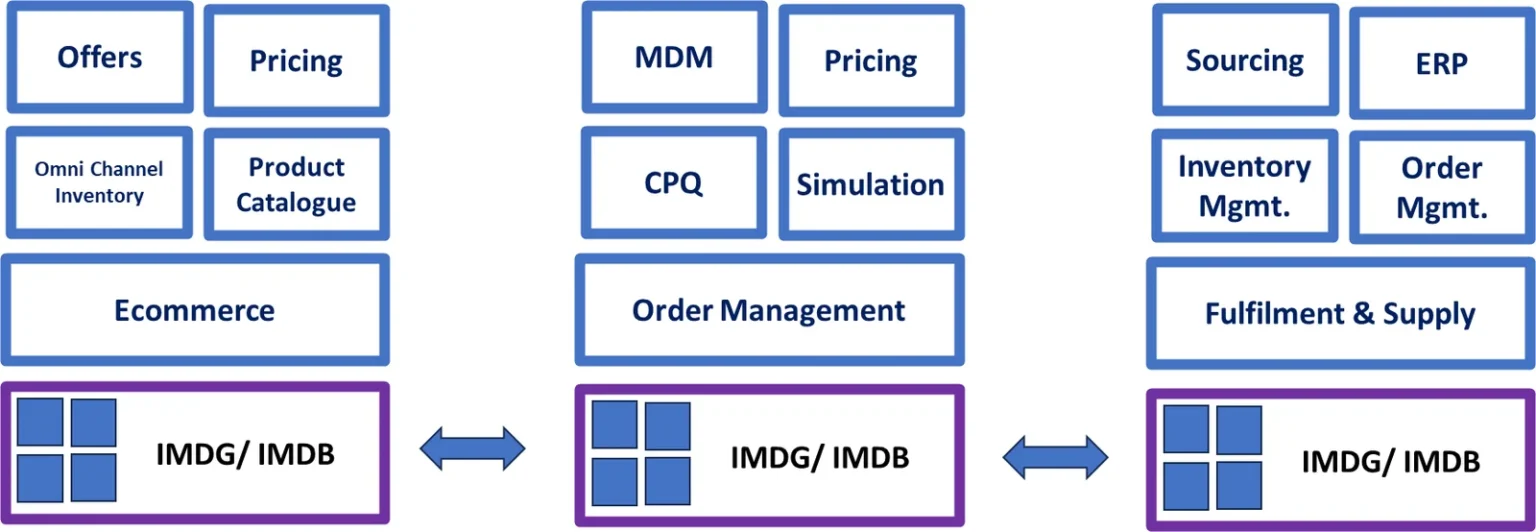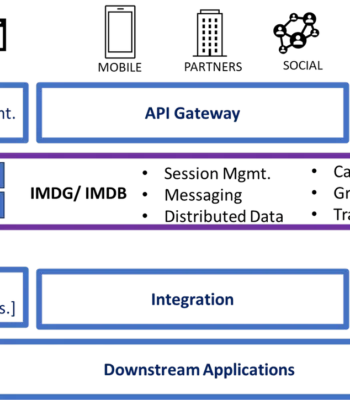Introduction
In-Memory Data Grids/Database can significantly improve e-commerce Inventory Management by providing real-time data processing, low-latency access, and scalability.
Here’s how an In-Memory Data Grid/Database can enhance inventory management in the e-commerce sector:
Real-Time Inventory Updates
In-Memory Data Grid/Database store inventory data in memory, enabling real-time updates as products are bought or restocked. This ensures that the inventory levels displayed to customers are always accurate, reducing the risk of overselling or out-of-stock scenarios.
Multi-Channel Inventory Management
e-commerce businesses often sell products through various channels, including online marketplaces, physical stores, and their own websites. In-Memory Data Grid/Database can centralize inventory data, allowing businesses to manage and update inventory across all channels in real-time.
Dynamic Pricing
e-commerce businesses can use real-time inventory data to implement dynamic pricing strategies, adjusting prices based on supply and demand. This can help optimize revenue and reduce excess inventory.
Automated Reordering
In-Memory Data Grid/Database can trigger automated reorder processes when inventory levels reach predefined thresholds. This helps maintain optimal stock levels, reducing manual intervention and minimizing the risk of product shortages.
Efficient Returns Handling
By offering real-time access to inventory data, Ecommerce platforms can streamline the returns process, ensuring that returned items are promptly restocked or processed for resale.
Personalized Recommendations
In-Memory Data Grid/Database enables real-time access to customer browsing and purchase history. This information can be used to provide personalized product recommendations, increasing cross-selling and upselling opportunities.
Out-of-Stock Alerts
In-Memory Data Grid/Database can generate alerts and notifications when inventory levels for popular products run low. This allows Ecommerce businesses to take proactive measures to restock or communicate estimated delivery times to customers.
Low Latency Access
In-Memory Data Grid/Database offers low-latency data access, allowing Ecommerce platforms to quickly retrieve product availability information when customers browse or make purchases. This speed ensures a seamless and responsive user experience.
Demand Forecasting
By processing historical sales and website traffic data in real-time, In-Memory Data Grid/Database can provide insights into demand patterns. Ecommerce businesses can use this information for better inventory planning and to avoid overstocking or understocking products.
Inventory Analytics
Real-time analytics on inventory data can reveal trends, such as seasonal variations and product performance. This information can guide decisions related to product assortment and marketing strategies.
Vendor Integration
Ecommerce businesses can integrate with suppliers and vendors in real-time. When a customer places an order, the platform can automatically communicate with suppliers to initiate the shipping process.
Enhanced Reporting and Insights
In-Memory Data Grid/Database supports real-time reporting and data analysis, providing e-commerce businesses with actionable insights for better inventory management and decision-making.
Scalability
As e-commerce businesses grow, In-Memory Data Grid/Database can scale to accommodate larger inventory data volumes and user demands without compromising performance.
Conclusion
Overall, In-Memory data platforms offer real-time inventory management capabilities, ensuring accurate product availability, efficient restocking, dynamic pricing, and personalized customer experiences. These capabilities help e-commerce businesses optimize inventory operations, reduce operational costs, and improve customer satisfaction.
Connect with us at info@mach41.com for insights on the topics discussed in this article or to explore reviews, consulting, and solutioning services for Hazelcast and other DataGrid solutions.




